Given the sheer number of breeds with European or North American roots, it’s easy to think that all dog breeds were created in one of these two places. In reality, modern dogs are a cosmopolitan group, with members hailing from just about every population center on earth.
So, while you may be more likely to see a German shepherd, Italian greyhound, or Labrador retriever at the local dog park, there are plenty of dogs whose ancestors lived in other parts of the world. Dogo Argentinos originated in South America, Australian shepherds are from the Land Down Under, and black Russian terriers are from, well, you get the idea.
Today, we’re going to look at some of the breeds that trace their roots to Africa. A handful are relatively familiar to the average dog lover, but there are also a few African breeds that you’ve probably never heard of. So, sit back, enjoy some thematically appropriate music, and we’ll get started.
Dog Breeds from Africa
Like dogs originating just about anywhere, African breeds not only reflect the desires, tastes, and preferences of their owners, they also possess a number of adaptations that help them to thrive in the local climate. And while Africa does have a few cool, mountainous regions, most of the continent remains quite warm all year long.
Accordingly, you may notice that most of these dogs have short coats, and several have other adaptations that help them deal with the heat. This includes things like large ears, small body size, and lanky legs.
1. Chinese Crested Dog
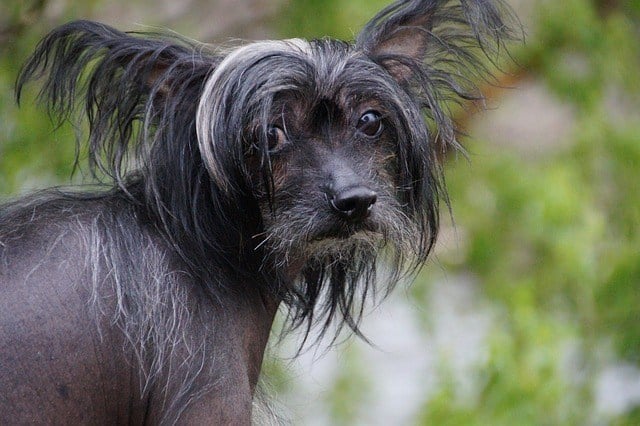
We’re going to start our list with a bit of an enigma. The origin of the Chinese crested dog is not entirely certain, but the general consensus is that they are likely to have originated in Africa. They earned the “Chinese” portion of their name while serving as rat hunters on Chinese cargo ships.
However, researchers have found that the three most notable hairless breeds – the Chinese crested, the Mexican hairless, and the Peruvian hairless — all share the same bit of genetic code that causes the hairless condition. This suggests that they all have a similar, likely Central American, relative, who lived about 4,000 years ago.
Regardless of their ancestry, Chinese cresteds are pretty unique dogs. There are two different varieties — the hairless and the furry “powderpuff” – and both types can occur in the same litter. The genetic trait that causes hairlessness also affects their teeth, causing them all to be pointy like canines. The powderpuff version, however, has regular teeth.
These little 10-pound dogs can be a bit of a mischievous handful, but they adapt well to apartment life and love spending every waking moment with their people. They’re pretty long-lived too; many pups reach 15 years of age or more.
Have a crestie? Be sure to pick a good food for him!
2. Rhodesian Ridgeback

This is more like it: An unquestionably African breed, named, in part, for an African country (although that country is now called Zimbabwe). The second part of their name refers to the stripe of fur that adorns their backs.
Rhodesian ridgebacks were developed by crossing feral African dogs with Great Danes, mastiffs, and a few other dogs of European ancestry. Initially conceived as a bird-flushing breed, hunters soon learned that they were also adept at hunting larger prey – and by larger, I mean king-of-the-jungle larger. That’s right, they were used to hunt lions.
Ridgebacks love to run (they’re awesome companions for joggers or bikers), although they will adapt to apartment life if provided with plenty of daily exercise. Ridgebacks (and ridgeback mixes) can make good pets, but they’re best paired with experienced owners, given their size, strength, and stubborn nature.
3. Azawakh

The Azawakh (pronounced oz-ah-wok) is a bit of a rare breed you won’t encounter very often at the local dog park. This is a shame, as these African dogs can actually make very good pets, especially for adults who live in relatively warm climates (Azawakhs get cold easily, and they’ll need a good sweater or coat during the winter).
Like other sighthounds, including Afghans, Salukis, and greyhounds, Azawakhs are leggy and lean, with long, endearing faces and floppy ears. They love to run (especially in pursuit of squirrels and other prey-sized critters), and they’re just as fast as you’d expect them to be.
However, Azawakhs actually do quite well in apartments. They are quiet and love to cuddle with their peeps, making them perfect couch companions. They aren’t the easiest dogs to train, but they don’t often cause many serious problems, either. They aren’t very warm with strangers, but they are usually pretty affectionate with their owners.
4. Basenji

Small, spirited, sprightly, and stubborn, the Basenji is a one-of-a-kind ancient dog breed that will steal your heart while driving you crazy. Basenjis are rather small canines, who usually weigh about 20 to 25 pounds and have cute little curly-cue tails. Their heads and perpetually alert ears seem a bit large for their bodies, but they’re cute nonetheless.
Hailing from the Congo region, these little dogs were bred to accompany hunters into the jungle, where they’d flush out small prey. Self-reliance, independence, and intelligence are all prerequisites for the job, and you can still see these traits in modern members of the breed. They are very difficult to train, and, as DogTime so aptly puts it, “see no need to obey humans.”
Basenjis certainly have their devotees, but they aren’t a great choice for most families, and would-be owners must know what they are getting into before adding a Basenji to their home. Basenjis are tidy and they neither shed heavily nor bark excessively (if at all), but many are very problematic chewers, gifted escape artists, and occasionally aggressive toward other small pets.
5. Boerboel
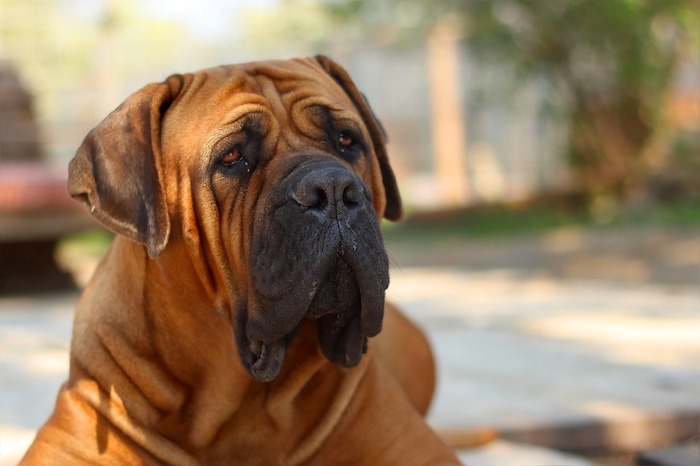
Typically pronounced “boo-r-bull,” the Boerboel is a massive mastiff that originated in South Africa. Incredibly heavy for their height – some stand only a bit over 2 feet tall while weighing nearly 200 pounds – Boerboels were developed as guard dogs. They were quite effective in such roles, and they were brave enough and strong enough to defend their families from lions, hyenas, and other large predators.
Like many other guarding breeds, Boerboels are very loving and affectionate with their families. They’re big slobbery sweethearts, who are gentle with and tolerant of children. They don’t like to be away from their families for very long, and they’re more sensitive than you’d expect such imposing dogs to be.
But despite all of these wonderful traits, it is important to think carefully before adding one of these giants to your family. They aren’t especially easy to train, and they aren’t particularly warm with strangers. When combined with their unthinkable strength and mass, these traits make them inappropriate for novice owners.
6. Atlas Mountain Dog

Also called the Aidi, the Atlas Mountain dog was originally developed in the Moroccan mountain range of the same name. Although they were originally a flock-guarding breed, they have an excellent sense of smell, so they were also used alongside Salukis to hunt. The Atlas Mountain dogs would sniff out hiding prey, which the speedy Salukis would then run down.
Bred to work, Atlas Mountain dogs have an athletic build (most adults are about 22 to 24 inches tall and weigh between 50 and 60 pounds) and a coarse coat that shields them from the elements. Most Atlas Mountain dogs are black and white, but completely white pooches exist too.
Atlas Mountain dogs can make good pets if properly socialized. They are sensitive and affectionate, but they are very protective of their people and territory. Many consider them to be among the best watchdogs in the world.
7. Greyhound

Most researchers believe that greyhounds originated in Egypt, but the breed is so old that it is difficult to be 100% sure where they come from. It is pretty clear that they were originally developed to hunt rabbits and other fast prey, like most of the other sighthounds from the region.
Greyhounds are one of the best pet breeds in the world, and they even work well for first-time owners when acquired as puppies (rescue greyhounds are occasionally skittish or fearful, which makes them better suited for experienced owners). While they usually want a yard and need regular exercise, most greyhounds love sleeping on the couch more than anything else.
Greyhounds are a breed that doesn’t shed very much, nor do they require much grooming. They can, however, become cold in the winter, thanks to their short coats and thin builds. Most greyhounds are in the 50- to 65-pound range, but the largest males get a bit bigger and may exceed 85 pounds in weight.
8. Abyssinian Sand Terrier
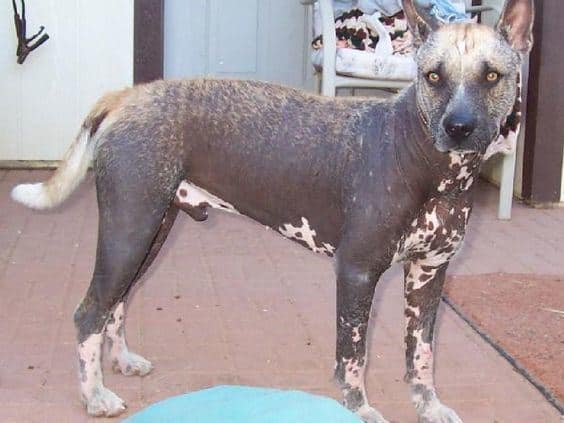
Also called the African hairless dog, the Abyssinian sand terrier is a smallish breed, who stands about 20 inches high and weighs up to 35 pounds or so. Some are completely devoid of hair, but most of these dogs have a bit at the back of their skull and the end of their tail. Most have grey to black skin, with scattered white or pink spots and blotches.
This is a very rare breed, which isn’t seen outside of Africa very often. They are thought to share ancestors with the Chinese crested and Mexican hairless dogs, but the finer points of their genealogy remain unknown.
They are said to be friendly and affectionate with their owners, yet brave and bold when facing down potential threats. Abyssinian sand terriers are also reported to be quite energetic, so they need plenty of exercise and a big yard in which to play.
9. Sloughi

Another sighthound from North Africa, the Sloughi is pretty similar to the greyhound and Azawakh. Capable of reaching nearly 2 ½ feet tall at the shoulder and weighing up to 65 pounds, the Sloughi projects a noble and impressive aura. Blessed with long legs and a lithe build, these dogs were originally bred to run down speedy prey.
Sloughis are very loving with their families, but they aren’t terribly concerned with making friends during your daily walks. They aren’t aggressive with strangers, but they’ll usually keep their distance and take a “wait-and-see” approach to unfamiliar people.
Sloughis have a very active prey drive, so you’ll want to remain alert for squirrels, cats, or small dogs running across the sidewalk in front of you. This can make it difficult to take Sloughis to the local park, so they are best suited for families that have large fenced yards. This will allow them to get the exercise they need without endangering the small critters you encounter.
10. Coton De Tulear
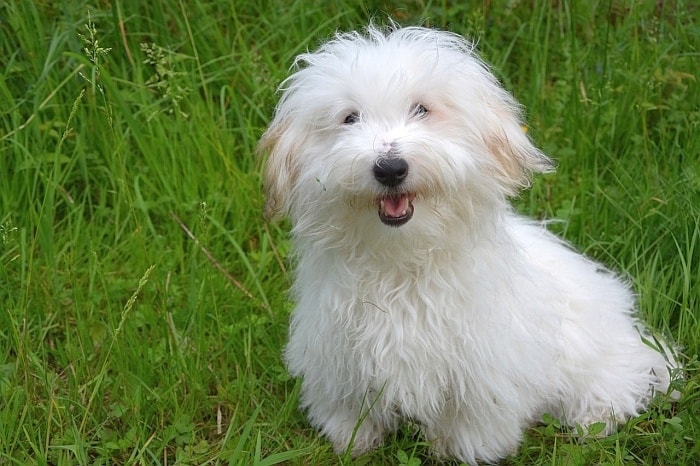
Remember earlier when I said most of these dogs were short-haired and lanky? Well, the Coton De Tulear is an exception to that trend. Related to the Bichon Frise and Maltese, the Coton De Tulear is a short little dog with a long, shaggy white coat. The biggest pups may reach 15 pounds, but most are smaller.
Originally from Madagascar, this little lap dog is as friendly as he is playful, and he loves spending time with his family. In fact, this is not a dog for families who spend long periods of time away from the house – they are very susceptible to separation anxiety.
Nevertheless, these are excellent dogs for first-time owners, and they’re reasonably easy to train. Despite the fancy look of their coats, Coton De Tulears don’t require very much grooming. They don’t need very much exercise, and they adapt very well to apartment life.
Do you have a favorite from this list? I think most of them are pretty neat.
If you made me pick my favorite African dog, I’d have to go with the African wild dog (Lycaon pictus).
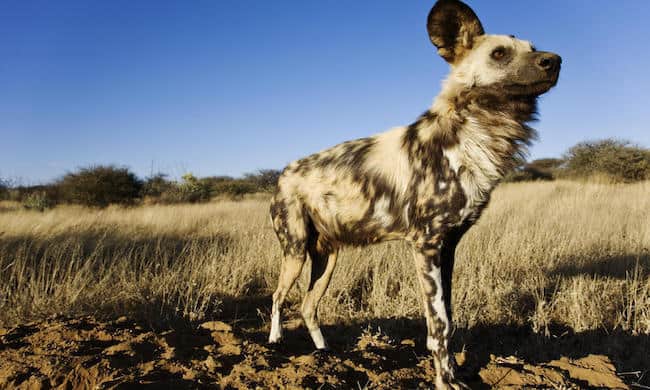
No; they’re not an official dog breed – they’re not even the same species as domestic dogs. And I won’t be adding one to the family anytime soon — they don’t make good (or legal) pets. But I rarely miss an opportunity to talk about these incredible canids!
Let us know which one of these African breeds you like most in the comments below! And if you don’t already have your pooch yet, make sure to check out our list of the best African dog names!




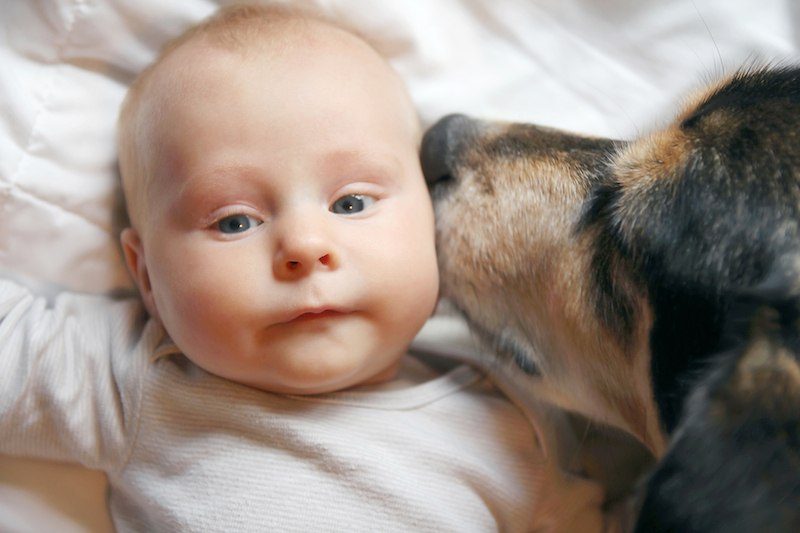

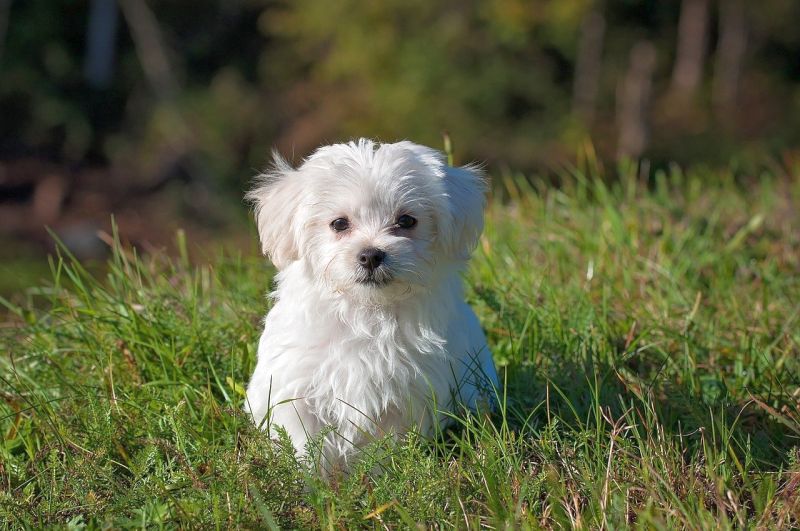

Leave a Comment